The Power of Daily Structure in Preventing Mental Health Spirals
Introduction
When your mental health starts to slide, it rarely feels sudden. One missed shower, one late night, one skipped meal—and before you know it, the fog rolls in. You feel disconnected, unmotivated, or even paralyzed. For people with chronic conditions like Multiple Sclerosis (MS), depression, anxiety, or trauma histories, these spirals can happen quickly—and getting out of them can take time.
But there’s one quiet, underrated tool that can offer protection and resilience: daily structure.
This isn’t about rigid routines or productivity obsession. Structure, when applied gently and intentionally, can create mental scaffolding that holds you steady when the ground feels shaky. It becomes a container—a rhythm—for staying anchored, emotionally regulated, and functional even during hard times.
This article explores how daily structure works, why it’s vital for mental health, how to build it when you feel stuck, and what it looks like when you live with illness or emotional overwhelm.
Want to try online therapy? Click here.
🔄 Why Do Mental Health Spirals Happen?
Mental health spirals often start with small shifts in behavior, energy, or cognition:
- You stop going outside.
- You skip meals or stay in bed too long.
- You isolate socially.
- Your sleep becomes chaotic.
- You lose track of time or days.
- You stop doing things that keep you grounded.
These changes can snowball—especially if you’re managing chronic stress, pain, neuroinflammation, or neurological illness like MS. Once routines are disrupted, it becomes harder to regulate your nervous system, energy levels, and mood.
Spirals are not personal failures. They’re often nervous system responses to overload or depletion.
But they’re also easier to prevent than to recover from—and that’s where structure comes in.
🧱 What Is Daily Structure (and What It Isn’t)?

Structure is not the same as rigid scheduling or over-planning. Instead, it’s a predictable rhythm of anchors throughout the day that:
- Grounds your body and mind in time and space
- Helps maintain basic self-care and cognitive function
- Gives your brain reference points when overwhelmed or disoriented
Structure is not:
- An all-or-nothing perfectionist checklist
- A punishment or control system
- A rigid timetable with no room for adaptation
Structure is:
- Gentle consistency
- Predictable rituals
- Soothing repetition
- Safety through familiarity
🧠 Why Structure Supports Mental Health
1. 🧭 Reduces Decision Fatigue
Mental health challenges can make small decisions feel overwhelming. Having a structure reduces how often you have to ask: “What should I do next?”
2. 🕊️ Creates a Sense of Safety
The nervous system feels safer in predictability. Anchors like morning routines or regular meals signal to the brain: We’re okay. There is order here.
3. 🧃 Supports Basic Needs
When your energy is low or you’re emotionally numb, structure ensures you eat, sleep, hydrate, and move your body in small but vital ways.
4. 🪴 Encourages Self-Trust
Following even tiny routines builds evidence that you can rely on yourself, even when you don’t feel well. This reinforces confidence and resilience.
5. 📉 Reduces Rumination and Overwhelm
When you know what to do next, your mind spends less time spiraling in guilt, overanalysis, or existential dread.
🧩 The Science Behind It
Circadian rhythms: Our brains and bodies thrive on rhythmic patterns tied to light/dark cycles. Disrupted rhythms increase anxiety, depression, and fatigue.
Cognitive load theory: Structure reduces the burden on your executive functioning, which is often compromised in mental illness or neurological conditions like MS.
Polyvagal theory: Predictable routines engage the ventral vagal state, which is associated with safety, social connection, and emotional regulation.
🪜 What Happens When Structure Is Missing?
When there’s no scaffolding, even small dips in energy or emotion can lead to:
- Lost time or days blending together
- Forgetting to eat, take meds, or move
- More impulsive decisions or avoidance
- Increased hopelessness, shame, or guilt
People with MS may experience this more acutely due to:
- Cognitive dysfunction (“brain fog”)
- Fatigue that derails routines
- Depression or apathy
- Difficulty managing time or transitions
🧘 What Daily Structure Can Look Like
Not a strict schedule, but a framework with:
- Anchor points: Wake time, meals, sleep, meds, hydration
- Transition rituals: Morning routine, winding down before bed
- Tethers to reality: Time outside, journaling, daily check-ins
- Pockets of pleasure: Music, hobbies, sensory moments
Even 3-5 structure points per day can keep your system regulated.
Sample Gentle Daily Structure (for MS or mental health support):

| Time | Ritual / Anchor Point |
|---|---|
| 7:30 AM | Wake up, light therapy or natural light exposure |
| 8:00 AM | Drink water, light movement (stretching) |
| 8:30 AM | Take medication with breakfast |
| 12:00 PM | Go outside for 5–10 minutes or open a window |
| 1:00 PM | Eat lunch while listening to calming music |
| 3:00 PM | Brief rest or mindful breath break |
| 6:00 PM | Prep/eat dinner, soft lighting |
| 8:30 PM | Screen off, evening routine, herbal tea |
| 9:30 PM | Wind down with meditation or reading |
| 10:30 PM | Lights out, sleep hygiene routine |
🛠️ How to Build Structure When You Feel Stuck
1. Start Tiny
Pick one or two non-negotiables: like brushing your teeth or opening your blinds each morning. Don’t aim for a perfect day—just the next anchor.
2. Use External Cues
Use alarms, checklists, sticky notes, or reminders. Externalizing structure reduces mental load.
3. Pair Activities
Link habits together. Take meds with breakfast. Do deep breathing while making tea.
4. Make It Sensory
Engage your senses—light a candle, play music, wrap in a cozy blanket. Sensory cues enhance routine stability.
5. Celebrate Small Wins
Checking off a small routine (even “got out of bed”) is not trivial—it’s brain maintenance. Validate it.
🧑🦼 Structure for People with MS
Chronic illness makes structure more challenging—but also more essential.
Tips:
- Build “low energy” alternatives for each routine (e.g., seated yoga instead of a walk)
- Use visual daily boards or planners
- Include rest windows as part of structure—not in opposition to it
- Align structure with symptom patterns (e.g., front-load the day if fatigue worsens in afternoon)Structure isn’t about pushing through—it’s about pacing, supporting, and containing the unpredictability of MS.
🧠 Mental Health Tools That Work With Structure
- CBT: Use structured thought tracking or behavior activation
- DBT: Incorporate daily mindfulness and emotion regulation
- ACT: Choose daily actions based on values, not just how you feel
- Somatic practices: Anchor routines with body-based rituals
Want to try online therapy? Click here.
💬 When You Fall Off the Structure—What Now?
You will fall off. Everyone does.
What matters is how you respond:
- Avoid the trap of shame. You didn’t fail.
- Identify your next small anchor. Just one.
- Re-enter gently. “Today I will do two things: shower and make toast.”
- Think of structure as a safety net, not a punishment.
You don’t have to rebuild it all at once—just pick up the thread.
🔄 Real-Life Examples of Preventative Structure
Case 1 – Sarah (living with MS):
Sarah sets three daily anchors: morning meds with sunlight, journaling after lunch, and a 9:30 PM wind-down alarm. She adjusts based on energy levels, but always has a framework that prevents spirals.
Case 2 – Alex (depression & anxiety):
Alex uses a visual routine chart on the fridge. Even on tough days, he checks off “brush teeth, eat oatmeal, 5 minutes outside.” These small wins keep him from sliding into isolation.
Case 3 – Maya (high-functioning but overwhelmed):
Maya uses time blocking: 90 minutes work, 15 minutes break. This pacing keeps her from burnout and improves emotional regulation.
🔚 Final Thoughts: Why Structure Is a Lifeline
When life feels like it’s unraveling, you don’t need a transformation—you need a thread to hold onto. Daily structure isn’t about controlling your life; it’s about creating gentle rhythms that carry you when you can’t carry yourself.
Mental health spirals thrive in chaos and isolation. But when your day has anchors—even small ones—you stay connected to reality, to your body, and to your capacity to cope.
Build slow. Make it yours. And remember: structure doesn’t restrict freedom—it creates it.
📚 References
National Institute of Mental Health (NIMH). Depression Basics. https://www.nimh.nih.gov
National Multiple Sclerosis Society. Cognitive Changes and MS. https://www.nationalmssociety.org
Porges, S. W. (2011). The Polyvagal Theory: Neurophysiological Foundations of Emotions, Attachment, Communication, and Self-Regulation. W. W. Norton & Company.
Siegel, D. J. (2010). The Mindful Therapist: A Clinician’s Guide to Mindsight and Neural Integration. W. W. Norton & Company.
MIND UK. Planning a routine. https://www.mind.org.uk
Cozolino, L. (2017). The Neuroscience of Psychotherapy: Healing the Social Brain (3rd ed.). W. W. Norton & Company.
American Psychological Association (APA). Why structure matters for mental well-being. https://www.apa.org
Mohr, D. C., et al. (2004). The effect of telephone-administered cognitive–behavioral therapy on depressive symptoms in multiple sclerosis: A randomized controlled trial. J Consult Clin Psychol, 72(3), 504–509.
Related Posts
-
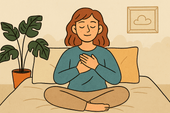
Learning to Feel Safe in Your Body Again
If your body no longer feels like a safe place—due to trauma, chronic illness, or anxiety—you’re not alone. This guide offers gentle, body-based strategies to help you reconnect with yourself, regulate your nervous system, and rebuild trust in your physical experience.
-
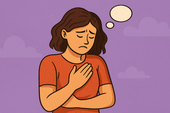
When You Feel Emotionally Unlovable: Challenging the Lie
Feeling unlovable because of your emotions, illness, or sensitivity? You’re not broken—you’re healing. Learn how to challenge the lie of emotional unworthiness and rebuild self-trust, one compassionate step at a time.
-
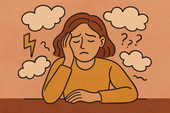
Brain Fog and Fatigue: How to Stop Blaming Yourself
Struggling with brain fog or chronic fatigue? You’re not lazy or failing. Learn how to stop blaming yourself for symptoms caused by MS or chronic illness, and start embracing a more compassionate path to healing and self-understanding.
-
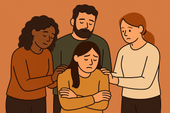
Creating an Emotional Support Team You Actually Trust
Tired of feeling unsupported or misunderstood? Learn how to build an emotional support team you actually trust—with people who see you, hold space for you, and respect your boundaries, especially when living with MS or chronic illness.
-
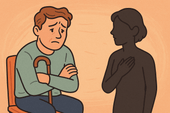
MS, Vulnerability, and the Fear of Being Seen
Living with MS can make vulnerability feel unsafe. Learn why so many people with MS hide their struggles—and how to gently move toward authenticity, self-acceptance, and deeper connection without shame.
-
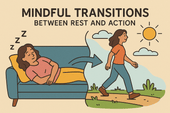
Mindful Transitions Between Rest and Action
Struggling to shift between rest and activity without guilt or overwhelm? This guide offers gentle, mindful strategies to make transitions feel more natural, intentional, and supportive of your nervous system.
-
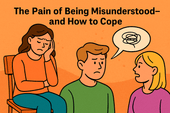
The Pain of Being Misunderstood—And How to Cope
Feeling the sting of being misunderstood? Learn why it hurts so deeply and discover practical, healing strategies to protect your truth, communicate clearly, and rebuild emotional safety when others just don’t get it.
-
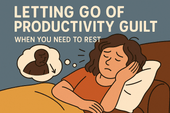
Letting Go of Productivity Guilt When You Need to Rest
Struggling with guilt every time you try to rest? Learn how to release productivity shame, understand why rest matters, and embrace a more compassionate rhythm for healing and recovery—without feeling lazy.
-

Rebuilding Energy Reserves Without Shame
-

What to Do If You Feel Emotionally Invalidated by Doctors
Feeling emotionally invalidated by your doctor can be deeply distressing. Learn how to recognize medical gaslighting, validate your own experience, and advocate for better care when you’re not being heard.
-

How to Rest Without Feeling Lazy
Rest isn’t laziness—it’s a necessary act of self-respect. Learn how to shift your mindset, let go of guilt, and embrace rest as a vital part of mental and physical well-being.
-

Redefining Energy Management as Emotional Self-Care
Energy isn’t just physical—it’s emotional. Learn how redefining energy management as emotional self-care can help you protect your peace, support your nervous system, and live more in tune with your true needs.
-
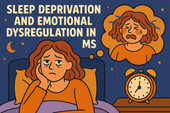
Sleep Deprivation and Emotional Dysregulation in MS
-
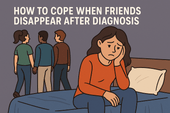
How to Cope When Friends Disappear After Diagnosis
Losing friends after a diagnosis can feel like another kind of grief. Discover why some friends disappear—and how to cope with the emotional fallout while building more supportive relationships.
-

How to Talk to Your Kids About MS Without Overwhelming Them
Struggling with how to explain MS to your kids? Learn how to talk to children of all ages about multiple sclerosis with honesty, clarity, and emotional safety—without overwhelming them.
-
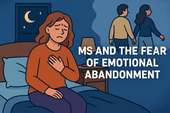
MS and the Fear of Emotional Abandonment
The fear of emotional abandonment is common for people with MS. This article explores why it happens, how it impacts your relationships, and how to create emotional safety and healing.
-
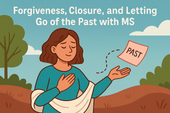
Forgiveness, Closure, and Letting Go of the Past with MS
Living with MS often brings emotional wounds from the past. Learn how forgiveness, closure, and letting go can help you heal emotionally—and reclaim peace in the present.
-

Supplements and Habits That Support Sleep and Emotional Balance
Struggling with poor sleep and emotional ups and downs? Discover calming supplements and daily habits that support deep rest and mental well-being—backed by science and easy to implement.
-
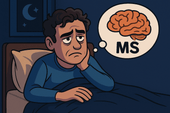
When Insomnia Feels Like Your MS Brain Won’t Turn Off
Struggling to sleep with MS? When your brain won’t shut off at night, insomnia feels relentless. Learn what causes it—and discover science-backed strategies to calm your mind and finally rest.
-

The Emotional Toll of Waking Up Tired Every Day: Why It Hurts More Than You Think
Waking up tired every day takes a deep emotional toll—from mood swings to lost motivation and self-doubt. Learn why chronic fatigue hurts more than you think and how to gently reclaim your mornings.
-
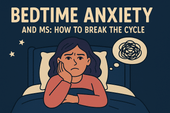
Bedtime Anxiety and MS: How to Break the Cycle
Bedtime anxiety is a common struggle for people with MS—and it’s more than just racing thoughts. Learn how MS-related stress, nervous system dysregulation, and fear of symptoms can create a cycle of sleeplessness, and discover practical, calming strategies to finally reclaim restful nights.
-

How Mental Health Affects Sleep Quality in MS: Breaking the Cycle of Fatigue and Emotional Distress
Struggling to sleep when you have MS? Discover how anxiety, depression, and neurological changes impact your rest—and what you can do to reclaim it. From CBT-I and calming supplements to lifestyle tips that support both mental health and sleep, this guide offers practical strategies for better nights.
-

Learning to Love Your Life (Even When It’s Not What You Expected)
Your life may not look how you imagined—but it’s still worth loving. Learn how to find peace, purpose, and joy in the unexpected.
-
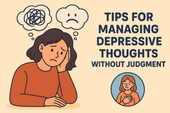
Tips for Managing Depressive Thoughts Without Judgment
Learn how to meet depressive thoughts with compassion, not shame. These gentle, research-backed tools help you manage low moods without self-judgment.
-
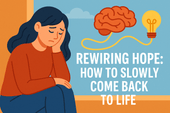
Rewiring Hope: How to Slowly Come Back to Life
Feeling emotionally numb or disconnected? Learn how to gently rebuild hope, one small sensory step and spark of life at a time.
-

Depression and Suicidality in MS: A Conversation That Needs to Happen
Depression and suicidality in MS are real—and urgent. Learn why we must talk about it, how to spot warning signs, and where to find help and hope.
-
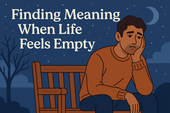
Finding Meaning When Life Feels Empty
Feeling disconnected or numb? Discover gentle ways to find meaning again—even in emptiness—through daily rituals, reflection, and purpose.
-

Healing from Emotional Flatness with Sensory Rituals
Feeling emotionally numb or disconnected? Discover how sensory rituals can gently restore pleasure, presence, and emotional resilience.
-
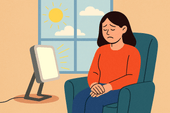
The Role of Light Therapy for Seasonal Depression and MS
Can light therapy ease seasonal depression in people with MS? Discover the science, benefits, and how to use it safely for better mood and energy.
-

Medication vs Therapy: Treating MS-Related Depression Effectively
Explore whether therapy, medication, or both are best for treating MS-related depression. Understand what works, when—and why combination care is often ideal.
-

How to Support a Partner with MS and Depression
Learn how to support a partner living with MS and depression—practical tips, emotional tools, and ways to protect your own mental health too.
-

The Emotional Cost of Losing Your Old Life
Losing your old life to MS isn’t just about physical symptoms—it’s about grieving the identity, dreams, and freedom you once had. This article explores the emotional toll of invisible grief and how to begin healing without denying the pain.
-

MS, Depression, and Hormones: What You Should Know
MS-related depression isn’t always just emotional—it can be hormonal. Discover how thyroid, sex, and stress hormones influence mood in MS, why women may feel worse during PMS or menopause, and what signs to look for when hormones may be driving emotional instability.
-

MS and Anhedonia: Reclaiming Pleasure One Step at a Time
Anhedonia—feeling emotionally flat or disconnected—is a common but misunderstood symptom of MS depression. This article explores how neuroinflammation, dopamine disruption, and fatigue can dull your sense of joy—and how small, gentle steps can help you begin to feel again.
-
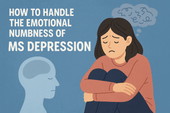
How to Handle the Emotional Numbness of MS Depression
Emotional numbness in MS depression doesn’t always look like sadness—it can feel like nothing at all. Learn why this disconnection happens, how it's tied to neuroinflammation and nervous system overload, and discover science-backed strategies to gently reconnect with your emotions.
-

How Inflammation Can Affect Mood in MS
Mood swings and emotional numbness in MS aren’t just psychological—they can be driven by immune system inflammation. This article explores how inflammatory cytokines affect the brain, why mood changes are often biological, and what you can do to calm your nervous system from the inside out.
-
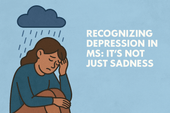
Recognizing Depression in MS: It's Not Just Sadness
Depression in multiple sclerosis (MS) is more than just sadness—it can be a neurological symptom, a side effect of inflammation, or a silent weight that masks itself as fatigue or emotional numbness. This article helps you recognize the hidden signs of MS-related depression, understand the science behind it, and explore real treatment options that support both mental and physical health.
-

Is Cryotherapy Safe for MS? Pros, Cons, and How It Compares to Cold Plunges
Cryotherapy promises quick recovery, inflammation reduction, and mood support—but is it safe for people with MS? This article breaks down the science, risks, and real-life benefits of cryotherapy for multiple sclerosis. You’ll also learn how it compares to cold plunges and which option may be better for calming flares and regulating your nervous system.
-

Can Cold Plunges Help Reduce Inflammatory Flares in MS?
Flares in multiple sclerosis (MS) are often driven by inflammation—but what if cold water could help turn down the heat? This in-depth article explores how cold plunges may help reduce flare frequency and intensity in MS by calming the immune system, lowering pro-inflammatory cytokines, and regulating the nervous system. Learn how to safely use cold exposure as part of your MS recovery routine.
-

How Cold Exposure May Help Regulate MS-Related Mood Swings
Mood swings are a common but overlooked challenge in multiple sclerosis (MS). This article explores how cold exposure—like cold plunges and showers—may help regulate emotional ups and downs by calming the nervous system, reducing inflammation, and boosting mood-enhancing chemicals. Learn how to use this natural tool safely to support your mental and emotional resilience with MS.
-

MS Fatigue Toolkit: Why Cold Plunges Deserve a Spot in Your Daily Routine
Fatigue is one of the most debilitating symptoms of multiple sclerosis (MS)—often invisible, misunderstood, and overwhelming. While no single tool can eliminate it, building a personalized fatigue management toolkit can make life more manageable. One surprising contender? Cold plunges. In this article, we explore why cold water immersion might be the refresh button your nervous system needs—and how to safely make it part of your MS fatigue routine.
-

Cold Therapy vs. Heat Therapy for MS: Which One Helps More?
Managing multiple sclerosis (MS) often means navigating symptoms like fatigue, spasticity, pain, and nerve dysfunction. But when it comes to using temperature-based therapies, there’s a question many patients face: Should I be using cold or heat? In this in-depth guide, we explore the benefits, risks, and best use cases of cold therapy vs. heat therapy for MS.
-

From the Tub to the Brain: How Cold Plunges Might Support Cognitive Clarity in MS
Cognitive fog is one of the most frustrating symptoms of multiple sclerosis (MS). But could cold plunges—those bracing dips into icy water—offer a surprising path to mental clarity? This article explores the emerging science behind cold exposure, brain function, and how a cold tub might help people with MS sharpen focus, lift brain fog, and reset their nervous system.
-

Why MS Patients Are Turning to Cold Plunges for Relief and Resilience
Cold plunges are no longer just for elite athletes and wellness influencers. A growing number of people with multiple sclerosis (MS) are turning to cold water immersion to ease symptoms, build nervous system resilience, and find calm in the chaos of chronic illness. This article explores why—and how—you might want to give it a try.
-

Cold Plunge Therapy: A Hidden Gem for People with MS?
Cold plunge therapy—once the domain of elite athletes and biohackers—is gaining attention among people with multiple sclerosis (MS). Could it help reduce inflammation, calm the nervous system, and ease MS symptoms like fatigue and spasticity? In this article, we dive deep into the science, benefits, safety, and practical application of cold plunges for MS recovery and symptom relief.
-
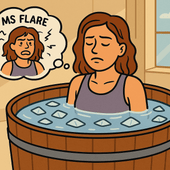
Finding Relief in the Midst of a Flare
MS flares can leave you feeling overwhelmed, exhausted, and mentally foggy. Cold water therapy is emerging as a promising tool to help reset the body and mind after a flare. This article explores how cold exposure supports recovery, calms the nervous system, and can be safely added to your daily routine.
-

How Cold Exposure May Help Regulate MS-Related Mood Swings
Mood swings in multiple sclerosis (MS) can feel like emotional whiplash—one moment calm, the next overwhelmed, angry, or hopeless. While medications and therapy help, many people with MS are exploring natural strategies to support emotional balance. One surprising tool gaining attention? Cold exposure. In this article, we explore how cold plunges and other forms of cold therapy may regulate the nervous system, stabilize mood, and offer emotional relief for people with MS.
-
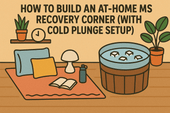
How to Build an At-Home MS Recovery Corner (with Cold Plunge Setup)
Create your personal MS recovery oasis at home—complete with a cold plunge setup. Learn how to design a space that supports healing, reduces inflammation, and helps you manage symptoms naturally.
-

The Role of Temperature Regulation in MS: Why Cooling Matters

















































